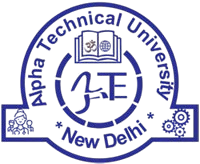MODULE 1
Getting started with Corel Draw
- Introduction to Corel Draw
- Features of Corel Draw
- Corel Draw Interface
- Tool Box
- Moving from Adobe Illustrator to Corel Draw
- Common Tasks
MODULE 2
Drawing and Coloring
- Introduction
- Selecting Objects
- Creating Basic Shapes
- Reshaping Objects
- Organising objects
- Applying color fills and Outlines
MODULE 3
Mastering with Text
- Introduction
- Text Tool
- Artistic and paragraph text
- Formatting Text
- Embedding Objects into text
- Wrapping Text around Object
- Linking Text to Objects
MODULE 4
Applying Effects
- Introduction
- Power of Blends
- Distortion
- Contour Effects
- Envelopes
- Lens effects
- Transparency
- Creating Depth Effects
- Power Clips
MODULE 5
Working with Bitmap Commands
- Introduction
- Working with Bitmaps
- Editing Bitmaps
- Applying effects on Bitmaps
- Printing
MODULE 6
Corel Draw- Web resources
- Introduction
- Internet Tool bar
- Setting your webpage
- Exporting files
- Creating buttons with rollover effects.3
| AUTOCAD 2D
- Introduction AUTO CADD
- New Page Setup
- Modifying line
- Line
- Ray
- Multiline,Polyline
- Copy
- Mirror
- Offset
- Array
- Break
- Streth
- Lengthen
- Trim
- Extend
- Break
- Join
- Chamfer
- Fillet
- 3D Polyline
- Polygon
- Rectangle
- ARC
- Move
- Rotate
- Scale
- Measure
- Table
- Hatch
- Gradient
- Boundary
- Wipeout
- Revision cloud
- Text.Xref
- Xclip
- Match properties
- Change to by layer
- Object
- Clip
- Annotative object scale
AUTOCAD 3D
- Introduction of 3D in Autocad
- Introduction of 3d View Ports.
- 3D Operations
- Extrude
- Loft
- Revolve
- Solid Editing
- Elevation
- Thickness
- Change Space Rotate 3D
- 3D Array
- 3D Navitigation
- SubtractIntersect
- Fillet
- Chamfer
- Align
- Lights
- Camera Adjustment
- Render Views
- Print Setting For (layouts)
|
|
Interface
- User Interface
- Viewpoints
- Command Panel
- Viewpoint UI Elements
Files & Objects
- Scene File Manipulation
- Simple Geometry Creation & Pivot Points
- Object Orientation
- Modifying Standard Objects
- Selecting Objects
- Organization of Objects in a Scene
Transforms
- Transform Tools
- Transform Base Point
- Coordinate Systems
- Align
- Cloning Objects
- Other Transforms
Applying Modifiers
- Concepts of the Modifier Stack
- Modifiers
- Noise
- Bend
- Push
- Twist
- Taper
- Skew
- Lattice
- Sweep
- Lathe
- Extrude
- Mirror
- Mesh Smooth
- Mesh Select
- Wave
Low-Poly Modeling
- Objects and Sub-Objects
- Sub-Object Levels
- Smoothing Groups
- Using Subdivision Surfaces
Shapes
- Shape Definitions
- Basic Shape Creation Functions
- Editing Splines
- Adding Splines from a Shape
- Segment Editing
- Vertex Editing
- Using Shape Modifiers
Compound Objects
- Booleans
- ProBoolean Operations
- Lofts
- Scatter Tool
Animation Basics
- 2d vs 3d Animation
- Time
- Keyframeing
- Auto Key and Set Key
- Track View
- Time
- Ease in / Ease out
- Arcs
- Secondary Action
- Anticipation
- Follow-through & Overlapping
- Squash & Stretch
- Exaggeration
Hierarchies
- Mechanics of Movement
- Linking Objects
- Schematic View
- Hierarchy
Materials
- Introduction to Materials
- The Matrial Editor
- Material Types
Using Maps
- Maps in Material Definitions
- Map Types
- Displating Maps in Viewpoint
- Mixing Maps
Mapping
- Mapping
- Unwrap UVW
- Render to Texture
Cameras
- Camera Types
- Framing a shot
- Camera Lenses
- Camera Aspect Ratio
- Camera Angles
- Perspective
- The Moving Camera
Lighting
- Light Types
- Lighting Techniques
- Light Lister
Mental Ray
- Mental Ray
- The Arch & Design Material
- Lighting
Rendering
- Rendering
- Time Output
- Ouput Size
- Ram Player
- Batch Render
| MODULE 1
Basics
- General preferences
- Bitmap vs vector, common file formats
- Interpolation, resolution and quality issues
- Import percentages (maximum)
- Viewing/opening documents, browsing
- Title bar info, new document specifications
- Colour models
MODULE 2
Tools and Palettes
- Tool bar, variations
- Options bar (introduction)
- Most commonly used palettes
- Palette options
- Editing tools vs vector tools
- Rulers, guides and grids
- Using control
MODULE 3
Image
- Image sizes (handout)
- Image size vs canvas size
- Cropping (and resizing), plus manual
- Image modes
- Basic retouching with clone, heal, patch tool
MODULE 4
Colour adjustment
- Basic tonal adjustment/enhancement
- Brightness/contrast: when to use levels (+ auto), shadow/highlight
MODULE 5
'Quality' adjustment
- Dust and scratches, reduce noise
- Blur, gaussian blur
- Sharpen/unsharpen, and size issues
MODULE 6
Transaction Control
- Transactions
- Command Classification
- Savepoints
- The SET TRANSACTION Command
MODULE 7
Transformation
- Flipping, scaling, rotating, distorting, perspective
- Control options
- Free transform, straighten or tilt
MODULE 8
Brushes
- Brush options and parameters
- Brush size and hardness
MODULE 9
Selections
- Various tools, tool options
- Adding/subtracting
- Inversing, feathering, grow, smooth, expand, similar
- Moving, transforming
- Show/hide
- Pen tool specifics
- Shape tools, options
- Selecting a path, show/hide, active/inactive
- Saving, clipping
- Paths to selections
MODULE 10
Layers
- Background v layer, creating layers
- Preserving data
- Re-arranging
- Hiding, locking/unlocking
- Naming, deleting
- Layer opacity
MODULE 11
Type
- Rasterised vs character, selecting and editing
- Formatting palettes
- Fill and stroke
- Type on a path
MODULE 12
Workflow
- Automating contact sheets
- Automating batches
- Saving the workspace
- Navigation, using guides and info
MODULE 13
Saving
- Save options, file formats for inDesign, web etc
- Paths to Illustrator
- Keyboard shortcut
MODULE 14
Project achievements:
- House ad/poster
- Web gallery
- Duotone photograph
- Repaired photograph
|

